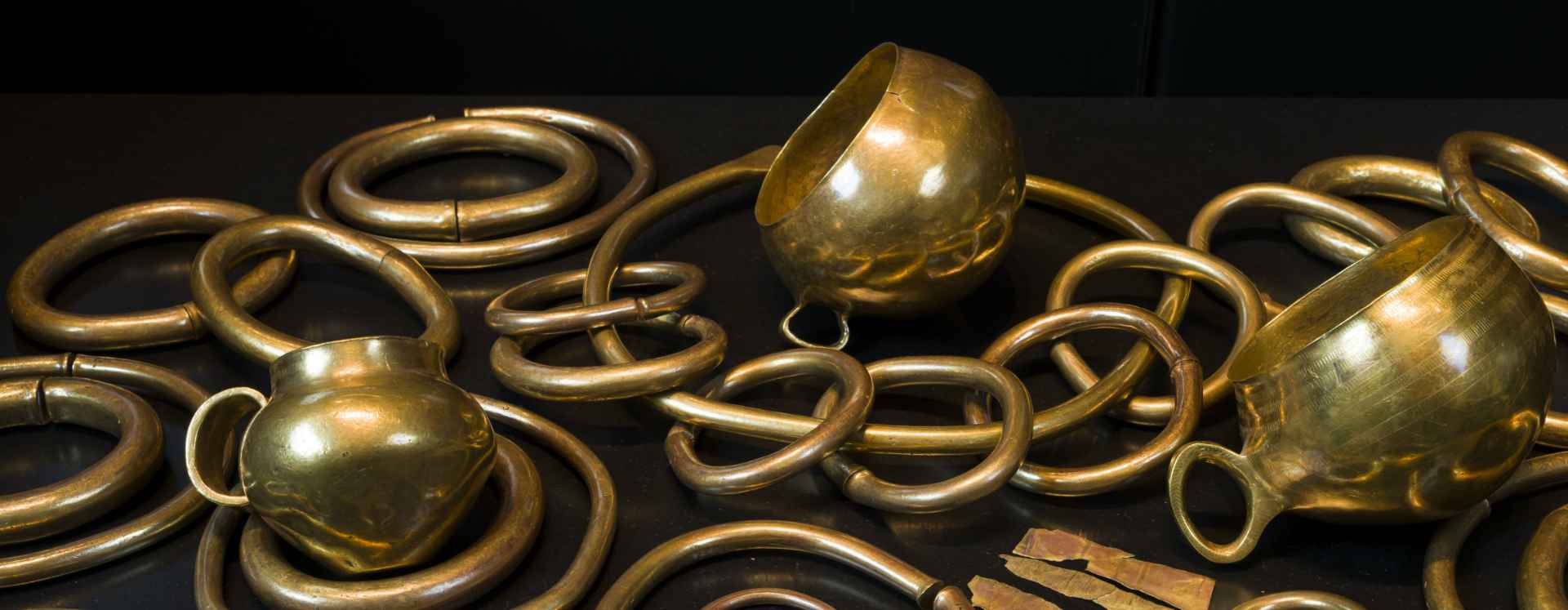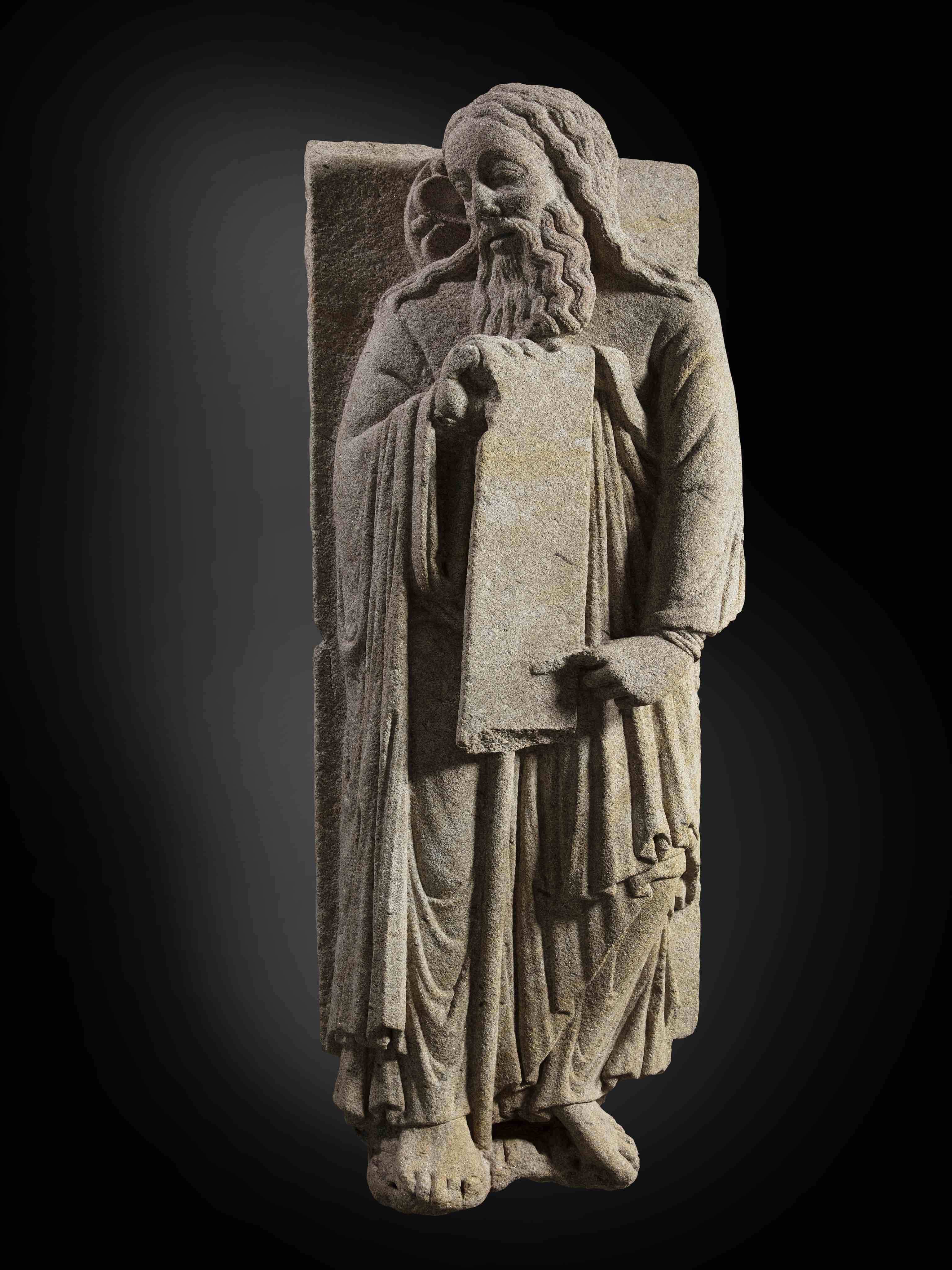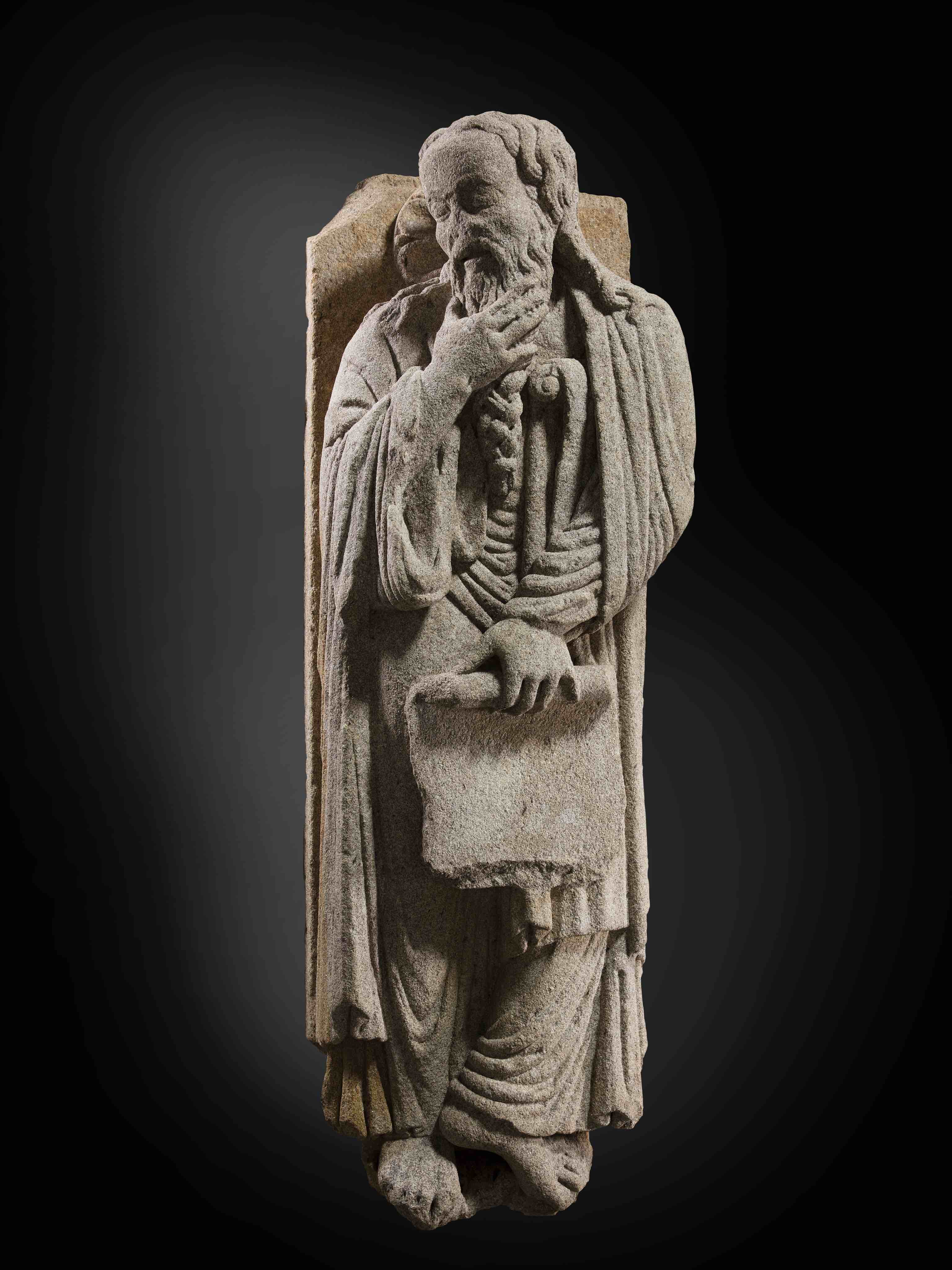Prophets of the Portico of Glory
These two sculptures were undoubtedly originally attached to the jambs of the exterior façade of the Portico of Glory in Compostela Cathedral. After the work on the façade in 1520, the two high reliefs passed into private hands. The Museum of Pontevedra bought them in 1956 from the Counts of Gimonde, making them two of its iconic pieces.
The formal similarities to the works of Maestro Mateo make their origin and authorship unquestionable, linked to some of the best artists of his workshop. These are reflected in aspects such as the volume, the arrangement of the legs, the anatomical consideration and the physiognomy of the beard and hair.
Although the identification of the figures is complex and disputed, their characterisation suggests that they are related to Old Testament prophets, which is why they appear to be elderly, meditative, with long hair and bushy beards, wearing tunics and carrying Tau staffs and parchment scrolls.
The Portico of Glory was originally a room without doors, open to the west, in keeping with the text of the Apocalypse, which inspired the iconographic programme of the whole complex. For this reason, its current image is incomplete and very different due to the interventions it has undergone over time.
The three outer arches were closed with doors from 1520 according to the guidelines of Martín de Blas and Guillén Colás, causing the disappearance or relocation of several pieces. Today we have evidence of seven of them: two are kept in the Cathedral, three belong to private collections and these two belong to the Museum of Pontevedra.
Label
More information
Along with other medieval pieces of interest, in addition to the Prophets, the Museum holds some works that reflect the impact that the innovations of the workshop of Master Mateo in Santiago Cathedral had on the Galician art of his time, either thanks to the work of his collaborators or that of followers and imitators of his style.
This is the case of the capitals of San Pedro de Fóra (Santiago, Ca. 1200), the image of San Pedro de Santiago de Gres (Vila de Cruces, Pontevedra, Ca. 1220-1230) and the voussoirs of the doorway of Santo Domingo de Bonaval (Santiago, Ca. 1240).




